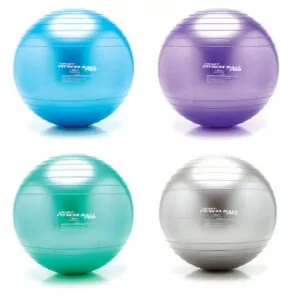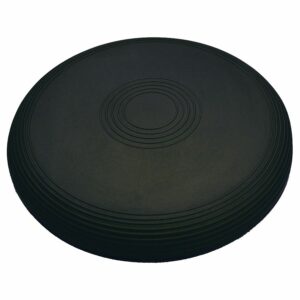Why is My Injury not Improving?
Updated:
Preventing a Chronic Injury
Although most injuries heal well with appropriate rehabilitation and Physiotherapy treatment, some injuries persist well beyond expected tissue healing times. In these situations, an injury that should heal relatively quickly can turn into a chronic injury lasting many months or in some cases years. ‘Chronic’ pain is commonly defined as pain which is experienced on most days for 3 consecutive months or longer. In this article we explore some of the most common reasons why injuries do not improve in the clinical setting and strategies to overcome these obstacles.
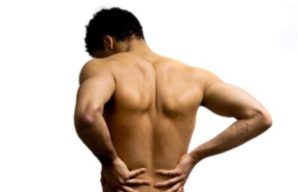
Signs of improvement
As a general rule, most musculoskeletal conditions seen in a typical Physiotherapy clinic should demonstrate clear signs of improvement within a relatively short period of time (usually 3 – 7 days) of commencing appropriate treatment. Most conditions should also continue to improve over time allowing a gradual return to activity. Signs of improvement may include:
- Reduced pain (or symptom) severity, frequency or duration
- Reduction in symptoms (such as swelling, pins and needles, numbness, burning sensations etc.)
- Increase in pain free periods
- Reduced reliance on pain relieving medication
- Improvement in range of movement, strength, flexibility, coordination, balance or fitness
- Improved activity tolerance (i.e. you can do more without increasing your symptoms)
- Improvement in movement quality (e.g. normalised walking pattern)
- Improved quality of sleep
- Ability to return to work, sport, recreational or daily activities without increasing symptoms.
For injuries that are on the right track, most patients can notice obvious signs of injury improvement. However, occasionally improvement can be more gradual and may not be detectable from one day to the next. In these situations, comparison over longer time periods (e.g. from one week or fortnight to the next) and accurate measurement may be required to notice significant changes.
If your condition (or chronic injury) is not improving and is in a state of plateau, deterioration or fluctuation (resulting in lack of progress) you may wish to consider the following list of common reasons for non-improvement and subsequent strategies to overcome these obstacles.
Below is a list of the Top 10 Reasons Why Your Injury is Not Improving:
Inadequate rest or recovery periods
The most common reason for lack of injury improvement is inadequate rest from aggravating activities. We all know that injuries can be frustrating. They usually take longer to recover than we are willing to allow and they can interfere with daily life, work, exercise, sport and recreational activities.
Once your body has sustained an injury (usually due to trauma or overuse), the damaged tissue is weakened and needs rest from damaging forces to ensure healing. Continued participation in activities that place more stress on the injured tissue than what it can withstand is a perfect recipe for injury perpetuation. It can result in a situation where the body takes two steps forward with healing and then two steps backwards with injury aggravation, resulting in lack of progress and potentially a chronic injury.
This situation commonly occurs when injured tissue is weakened to the point that it cannot withstand every day or recreational forces. In these situations, a condition that should heal quickly can turn into a chronic injury, simply by continuing with normal life.
The good news is we can easily reverse this process by making a proactive choice to change our behaviour so it is in harmony with natural healing processes. Our body is also great at giving us feedback and letting us know that we are doing too much, therefore slowing or preventing our recovery.
Learning to listen to your body
Pain is your body’s primary warning system letting you know that you are causing tissue damage or are just about to. The old adage, “no pain, no gain” is not something you should follow when it comes to injury recovery. As a general rule, an activity is causing tissue damage if you experience pain either during that activity or after the activity, often with rest (e.g. that night or upon waking the next morning).
Learn to listen to your body (to avoid the development of a chronic injury) and choose to perform activities (or levels of activity) that do not cause an increase in pain during the activity or after the activity with rest. An appropriate brace or stress shielding device may be required (such as protective tape, crutches, a protective boot etc.). Aim to eliminate any aggravating activity until symptoms settle. Then slowly build up activity provided there is no increase in symptoms. General muscle soreness, such as that which occurs a couple of days following an unaccustomed activity (e.g. weight training), is usually fine. However it should not be isolated to the injured tissue.

Getting back to activity too quickly

Members Only ContentBecome a PhysioAdvisor Member to gain full access to this exclusive content. For more details see Become a Member. Already a member? Login Now
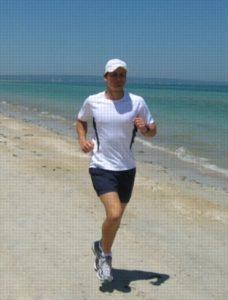
Perpetual inflammatory cycle
When tissue is damaged, an inflammatory response commonly occurs usually lasting 48 – 72 hours. The inflammatory response involves the local release of chemicals causing pain and swelling. This often presents to the patient as soreness that increases with rest. This soreness is often experienced as a dull ache, pain, stiffness or throbbing sensation that is typically worse at night or upon waking in the morning. Inflammatory symptoms often appear to warm up with movement or heat (such as a hot shower). However, it is important to realise that these relieving activities actually increase the amount of inflammation and, if undertaken during the inflammatory phase of injury healing, can lead to a perpetual inflammatory cycle
In some conditions, the increase in local swelling (associated with inflammation), can increase pressure in local tissue causing irritation of local structures and further inflammation. This can then set up a perpetual cycle of inflammation and swelling causing further inflammation.
Anti-inflammatory treatment

Members Only ContentBecome a PhysioAdvisor Member to gain full access to this exclusive content. For more details see Become a Member. Already a member? Login Now
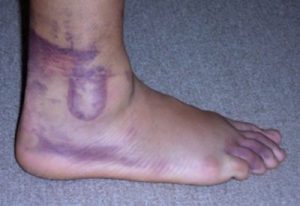
Excessive rest
We all know that injuries need relative rest to heal and recover. But too much of a good thing is exactly that – too much. To ensure optimal healing, injured tissue also needs appropriate levels of activity (and subsequent stress) to aid the healing process and allow the damage tissue to further strengthen over time as it adapts to the forces it is exposed to. A gradual increase in activity in line with tissue healing times is essential for an optimal outcome.
Benefits of increased activity
Building up activity also has numerous other benefits including:
- Increasing local blood flow and subsequent healing
- Strengthening of local supportive muscles
- Reducing local muscle tension
- Increasing range of movement (and often shock absorption)
- Improving coordination, balance, function and fitness
- Increasing flexibility
- Improving psychological and general wellbeing
- Desensitising the central nervous system and local (peripheral) nervous system
Negative effects of excessive rest
Excessive rest, often associated with fear avoidance of activity (due to a perceived risk of injury recurrence) can do exactly the opposite including:
- weakening injured tissue and surrounding muscles
- increasing adaptive tissue shortening (muscle tightness and joint stiffness)
- impeding blood flow and healing
- decreasing psychological and general wellbeing
- sensitisation of the central and peripheral nervous system (i.e. a heightened pain response or even pain in the absence of tissue damage).
These changes can setup a perfect environment for the development of a chronic injury or chronic pain. Some studies even suggest that fear avoidance of activity is more disabling than the injury itself.
Try to adopt a balanced approach of gradually increasing activity levels provided there are no signs of injury aggravation. Read our comprehensive article – Understanding Pain and learn about how to differentiate between hurt and harm, how to desensitise the nervous system and some important psychological strategies to reduce unnecessary pain and suffering associated with a chronic injury.
Inappropriate psychological strategies and beliefs
The way we think about our injury can have a major impact on our recovery. Poor psychological states, often associated with excessive, repetitive and non-productive thought processes can act as an indicator of a poor outcome and setup ongoing pain and a chronic injury.
Our state of mind and thinking can also help to:
- Accelerate or impede our recovery
- Sensitise or desensitise our nervous system
- Moderate the degree of pain and suffering experienced
- Enhance or impede rehabilitation
- Markedly affect our injury prognosis
We’ve already covered this topic extensively in our article Understanding Pain so we won’t repeat ourselves here. If you are suffering from long term pain or a chronic injury, consider seeing a psychologist who specialises in chronic pain to ensure your thinking is in alignment with best principles. Our article Understanding Pain is also a must read and provides useful strategies and detailed coverage of topics such as:
- What is Pain?
- The Sensitive Nervous System
- The role of attention in pain
- Hurt vs. Harm
- Natural Pain Relief
- Strategies to reduce pain and suffering
Inaccurate diagnosis

Members Only ContentBecome a PhysioAdvisor Member to gain full access to this exclusive content. For more details see Become a Member. Already a member? Login Now
Non-compliance with rehabilitation

Members Only ContentBecome a PhysioAdvisor Member to gain full access to this exclusive content. For more details see Become a Member. Already a member? Login Now
Other intervention required
Some injuries are simply beyond the body’s healing capacity and may need other intervention to ensure an optimal outcome and allow the healing process to occur. In these instances, your physiotherapist or local doctor can usually provide appropriate referral advice. This might include referral to an orthopaedic specialist or sports doctor. Some common examples of injuries requiring other intervention might include:
- Displaced fractures (which often require re-alignment and sometimes surgical fixation using plates, pins, rods or screws etc.)
- Moderate to severe osteoarthritis (sometimes requiring joint replacement surgery, such as knee or hip replacements, if comprehensive conservative treatment has been unsuccessful)
- Severe cartilage or meniscal tears (often requiring arthroscopic debridement or repair)
- Full thickness or complete tendon tears (sometimes requiring surgical repair)
- Ligament ruptures (sometimes requiring reconstructive surgery)
If your condition is not improving adequately (or you are suffering from a chronic injury), take a proactive step and discuss appropriate management with your doctor or physiotherapist.
Unhealthy lifestyle
Lifestyle factors, such as sub-optimal nutrition, obesity, excessive alcohol consumption, smoking, inadequate sleep or dehydration, can play a significant role in impeding injury recovery and setting up a chronic injury. Take a holistic approach to your injury and try to identify any key lifestyle areas that might need some work. If you’re having trouble implementing changes, or are not sure where to start, ask a professional.
Inappropriate treatment
Despite seeing appropriate health practitioners, sometimes advice from qualified professionals is misinterpreted (or perhaps in itself not in alignment with natural healing). A reasonably common example is the patient who diligently performs their rehabilitation exercises and experiences pain during or after their exercises (with rest). The patient might think that pain is an indication the exercises are working, or adopt a ‘no pain, no gain’ approach. Whilst some pain is acceptable with certain rehabilitation exercises in certain situations, more often than not, it’s an indication of injury aggravation and can provide the environment for chronic injury development.
You need professional help
The bottom line is, if you’re not improving make sure you see a physiotherapist to have your injury assessed and any contributing factors addressed as soon as possible. Your physiotherapist can also advise if you need to see any other health professionals to ensure an optimal outcome. Getting on top of aches or pains before they become significantly problematic is a key aspect of optimal injury management and chronic injury prevention.
- Find a physiotherapist in your local area who can help to get your chronic injury on track.
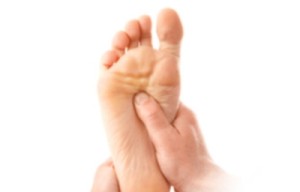
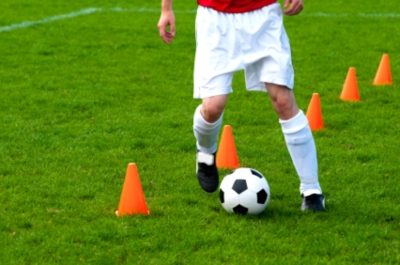 Injury Prevention Tips
Injury Prevention Tips
For general sports injury prevention tips see our article:
For sport specific injury prevention tips, click on the appropriate link below:
- Cycling Injuries
- Running Injuries
- Skiing Injuries
- Snowboarding Injuries
- Swimming Injuries
- Throwing Injuries
 Recommended Reading to assist a chronic Injury
Recommended Reading to assist a chronic Injury
- Understanding Pain.
- Physiotherapy Exercises.
- Posture.
- Choosing a Shoe.
- Do i Need Orthotics?
- Ergonomic Computer Setup.
- Mobile Phone Ergonomics.
- Bike Setup.
- Choosing a School Bag.
- Return to Running Program.
- Safe Lifting.
- Ice or Heat?
- How to Use Crutches.
- Taping Techniques (Lower Body).
- Taping Techniques (Upper Body).
- Warming Up and Cooling Down.
- Unsure of your injury? View our Injury Diagnosis Guides.
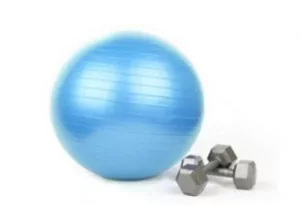 Physiotherapy Products for Chronic Injury Treatment
Physiotherapy Products for Chronic Injury Treatment
To purchase physiotherapy products to assist a chronic injury, click the above links or visit the PhysioAdvisor Shop.
 Find a Physio to identify why your chronic injury is not improving
Find a Physio to identify why your chronic injury is not improving
Find a physiotherapist in your local area who can identify why your chronic injury is not improving.
Become a PhysioAdvisor Member
-
 Individual Membership (12 Months)$59.95 for 1 year
Individual Membership (12 Months)$59.95 for 1 year -
 Individual Membership (3 Months)$39.95 for 3 months
Individual Membership (3 Months)$39.95 for 3 months -
 Individual Membership (Yearly)$49.95 / year
Individual Membership (Yearly)$49.95 / year -
 Individual Membership (Monthly)$15.95 / month
Individual Membership (Monthly)$15.95 / month

Link to this Page
If you would like to link to this article on your website, simply copy the code below and add it to your page:
<a href="https://physioadvisor.com.au/health/injury-rehabilitation/why-is-my-injury-not-improving-chronic-injury”>Why is My Injury not Improving? – PhysioAdvisor.com</a><br/>Learn the top 10 clinical reasons why your injury is not improving and avoid a chronic injury with PhysioAdvisor's detailed physiotherapy advice.
Return to the top of Why is My Injury not Improving?.





